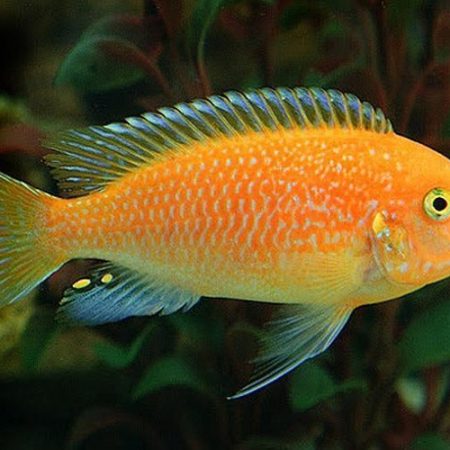

But a decor of rockwork that offers lots of nooks and crannies for hiding places is needed for success. This species easily adapts to prepared foods, is very easy to breed, and the juveniles are very easy to raise as well.įor the aquarists who is willing to do frequent water changes and provide appropriate tank mates, the Red Zebra is easy to care for. It is only a moderately aggressive cichlid compared to other Mbuna, but is still not a community tank specimen, It cannot be kept with fish other than cichlids. This is a great fish for both the intermediate and experienced cichlid keeper. Common names are derived from their color patterns and popular varieties include the Cherry Red Zebra and the more recently developed Super Red Zebra. Females can be yellow, orange, or orange with dark mottling. Males of a “red-red” strain can be a orange/red coloring with no vertical bars, and there is also an albino strain. These include males of a “red-blue” strain that are a light blue with faint vertical barring. There are many captive strains available. This resulted in orange males and a variety of other unusual color patterns. Most captive bred specimens available in the hobby were originally line bred for specific color traits in Florida fish farms. But today it has regained its status as one of the “most popular” African Cichlids. When first introduced to the hobby this was a very popular Mbuna, and then it fell out of favor a bit. Now however, the Red Zebra is considered valid as Maylandia estherae and is also called Esther Grant’s Zebra. All the Zebra-type cichlids were moved to their own genera and both Maylandia estherae and Metriaclima estherae were recognized for this cichlid. Recent revisions in the Pseudotropheus genus caused a new surge of identity crisis. Finally it was described as its own species, Pseudotropheus estherae, by Konings in 1995. It was known as the Orange Blue Mouth Breeder and described as Pseudotropheus spec. It was originally considered to be a variety of the Zebra Cichlid Pseudotropheus zebra. This cichlid has a history of ups and downs in both identity and popularity. This name aptly describes the environment these fish live in as opposed to being open water swimmers like the Utaka cichlids and other “haps”. The name Mbuna comes from the Tonga people of Malawi and means “rockfish” or “rock-dwelling”.
FEMALE RED ZEBRA CICHLID FULL
There are 13 genera full of very active and aggressive personalities of Mbuna cichlids. This is a zebra-type cichlid that belongs to a group called Mbunas. These are also one of only a handful of Mbuna species that produce blotched color mutations. If a female accepts his offer, she will lay her eggs in the nest before taking them up into her mouth. The male will prepare a nest in the substrate and display it to entice a female. These fish are not difficult to breed in a home aquarium. In the wild adult males are light blue, while females can range between a brownish beige to an orange-red and lack the broad vertical barring. Female red zebra cichlids typically have a more rounded anal fin with three or less. The coloring of both the male and the female is very appealing, almost looking like two separate species. Brood sizes will usually be less than 20 fry, and 10-15 is most common.Send your inquiry of Red Zebra Cichlid (Maylandia estherae) to our email Red Zebra Maylandia estherae (previously Pseudotropheus estherae) is a very beautiful and desirable cichlid. The female will take food into her mouth during the brooding cycle, however, it may be to feed her fry as much as it is to feed herself. Once the spawn is complete, the female will hold the eggs in her mouth until the fry are able to swim and forage for themselves. The subdominant male will clamp his fins and lose his colour as a sign of submission.) After displaying for the female, he will attempt to lead her back to his spawning site by swimming away, but shaking his tail in a manner only seen during spawning. (Note if a male is shaking in the same way in front of another male, he is displaying his dominance. Once his breeding site is picked out and a female is ready to spawn, he will display by shaking in front of the female. This pit may be up against a large rock, or it may not. He may, or may not, dig a pit in the sand down to the aquarium bottom. The male will select a breeding site, it will usually be on the sandy bottom. Red Top Black Bar Zebras are a maternal mouthbrooder. These Mbuna breed like rabbits, so if you provide many hiding places (many small rocks) in the aquarium, you’ll soon get an overcrowded aquarium. As they eat algae in nature, a vegetable diet with an additional protein snack (krill, mysis, artemia, chopped shrimp, … but NO animal meat!) every now and then is recommended.

The Red Top Black Bar Zebra Cichlid comes from Nakantenga Island in Lake Malawi, Africa.īreeding and feeding is quite similar to that of other Mbuna.


 0 kommentar(er)
0 kommentar(er)
